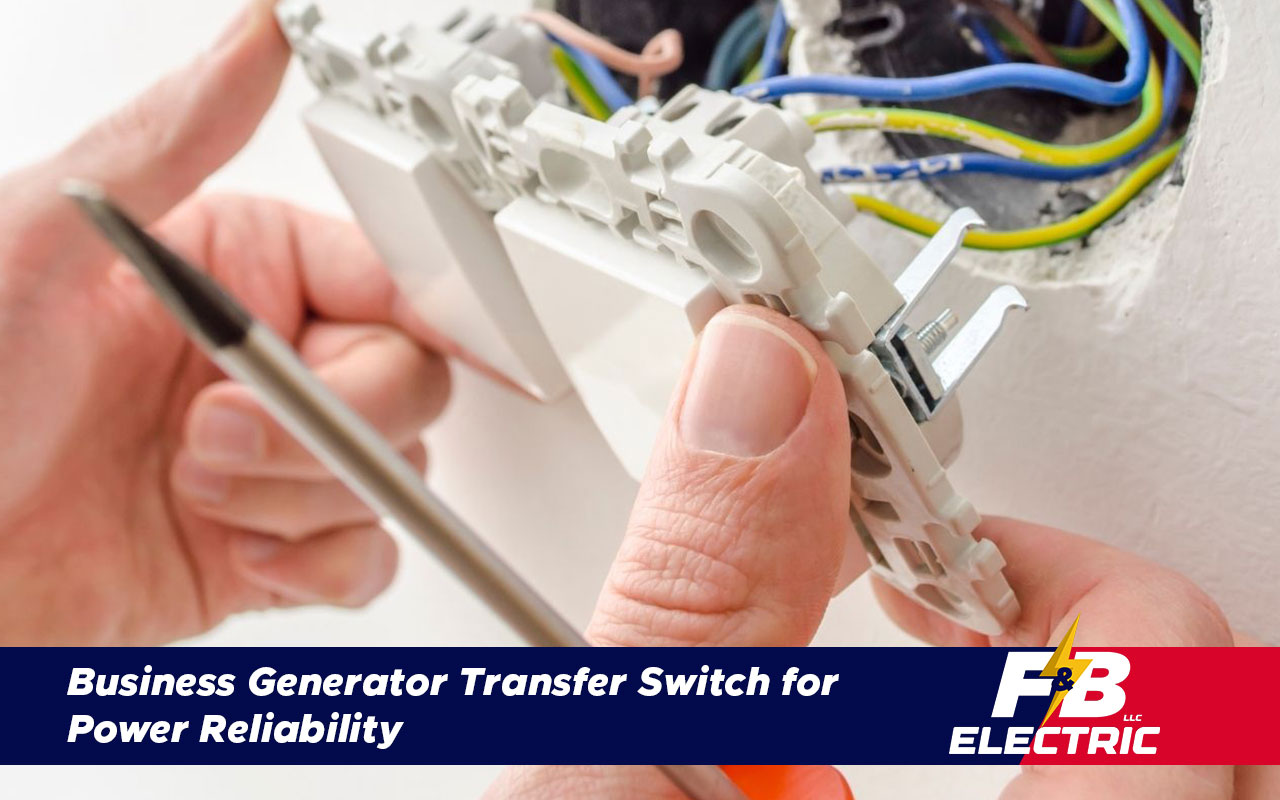
When your business relies on uninterrupted power, even a short outage can cause serious disruptions. That’s why a business generator transfer switch is one of the most critical parts of a commercial backup power system. It allows you to switch safely between utility power and your backup generator—automatically or manually—without risking your equipment, employees, or operations.
At F&B Electric LLC, we help Maryland businesses design and install reliable generator systems with safe, code-compliant wiring. From small retail stores to large warehouses, transfer switches make all the difference in managing backup power effectively.
What Is a Generator Transfer Switch?
Safe Power Shifting
A transfer switch acts as a bridge between your main electrical panel and the backup generator. It disconnects your business from the utility grid during an outage and connects the generator to your building’s circuits instead. When power returns, the switch moves back to utility power—either automatically or manually.
This setup prevents backfeeding (a dangerous situation where electricity flows into utility lines) and keeps your electrical system organized and protected.
Automatic vs. Manual
There are two main types of transfer switches for businesses:
- Automatic Transfer Switch (ATS): Detects a power loss and switches over to the generator without any manual input. Ideal for operations that can’t afford downtime.
- Manual Transfer Switch: Requires a person to flip the switch. This option works well for smaller facilities or less critical applications.
Both options must be installed by licensed professionals to ensure safety and compliance.
Why It Matters for Commercial Generator Wiring
A transfer switch isn’t just a convenience—it’s a necessity for any business using a standby generator. It connects to key circuits such as lighting, security systems, refrigeration, or server rooms. Depending on your building’s size and needs, your electrician will design the switch wiring to handle single-phase or three-phase loads.
Paired with the right generator, a transfer switch ensures clean transitions and protects your electrical panel from damage during startup or shutdown. It’s an essential piece of any system involving backup generator wiring for businesses.
Planning Transfer Switch Installation for Your Business
Before installation, an electrician will evaluate your building’s current setup, generator size, and circuit priorities. The wiring must be configured to handle your essential load without overloading the system. Surge protection, grounding, and wiring layout are all considered to prevent hazards and improve reliability.
If you’re adding a generator to an older commercial space, additional upgrades may be required to meet today’s electrical code. This is a good time to modernize your panel or update high-demand circuits.
FAQs – Business Generator Transfer Switch
Do I need a transfer switch for a commercial generator?
Yes. A transfer switch is necessary to safely switch between utility and generator power and avoid backfeeding or damage.
Which is better for a business—manual or automatic?
It depends on your needs. Automatic switches are ideal for critical operations. Manual switches are fine for businesses with less urgency during outages.
Can I use a residential switch for my business?
No. Commercial systems require switches rated for higher loads and often three-phase power. Business-grade equipment is built for safety and durability.
Keep Your Business Running with Confidence
Power outages are unpredictable—but your response doesn’t have to be. Installing a business generator transfer switch ensures your backup system works the way it should. It’s a smart, safe solution for managing energy and avoiding downtime.
F&B Electric LLC helps businesses throughout Maryland plan and install generator systems, including transfer switches and complete wiring. Contact us today for expert guidance and dependable service tailored to your commercial needs.
